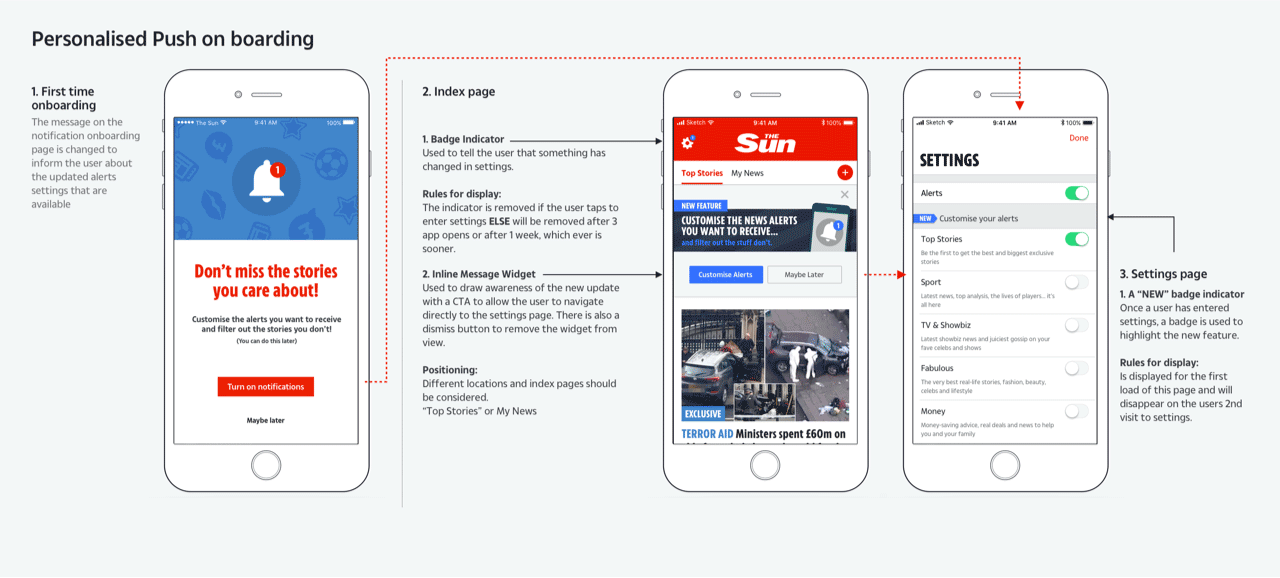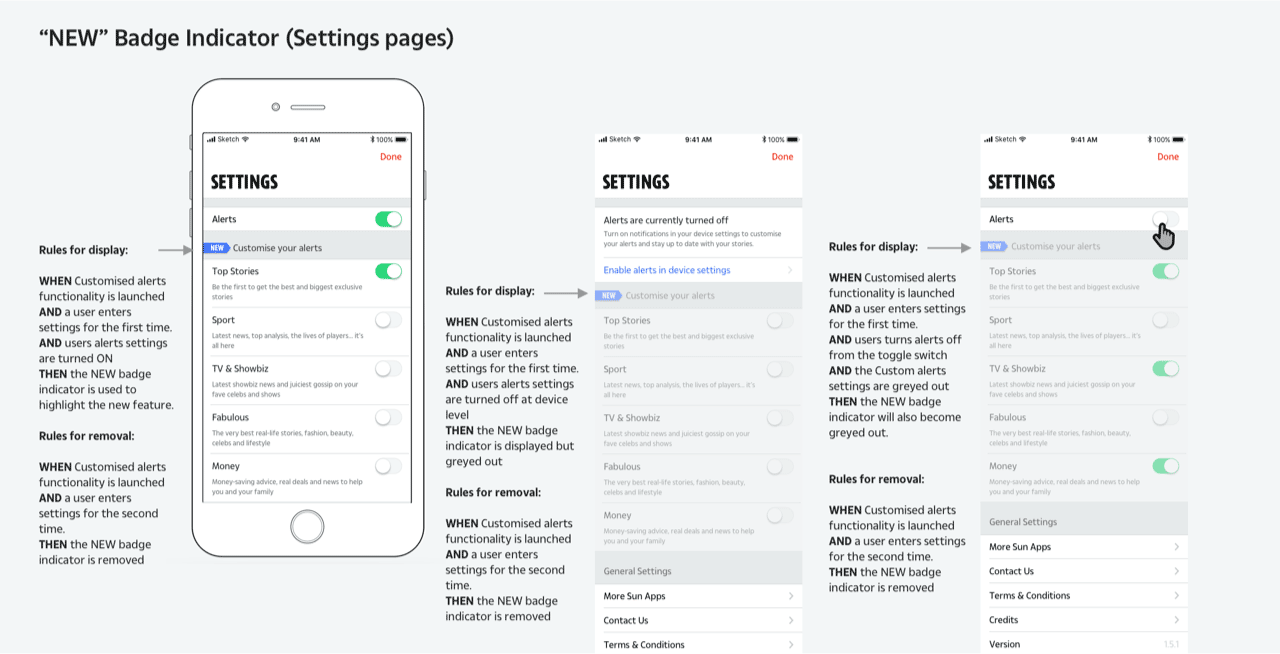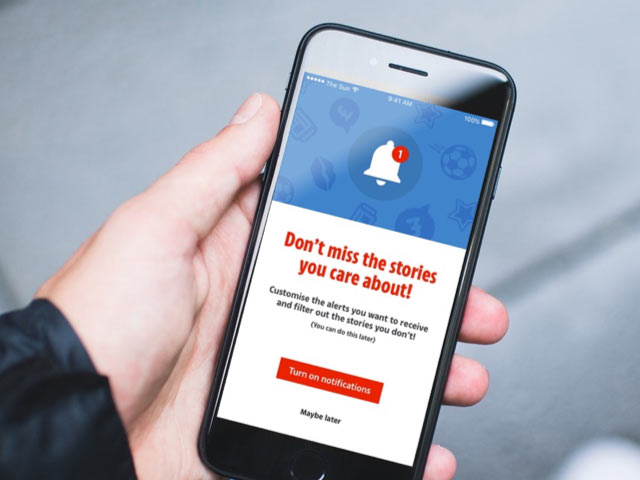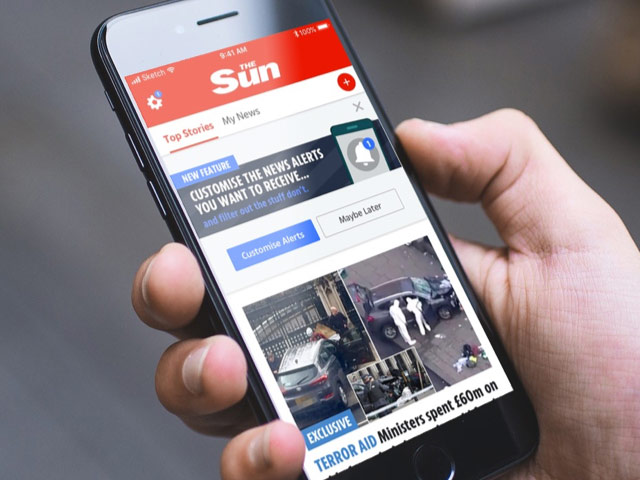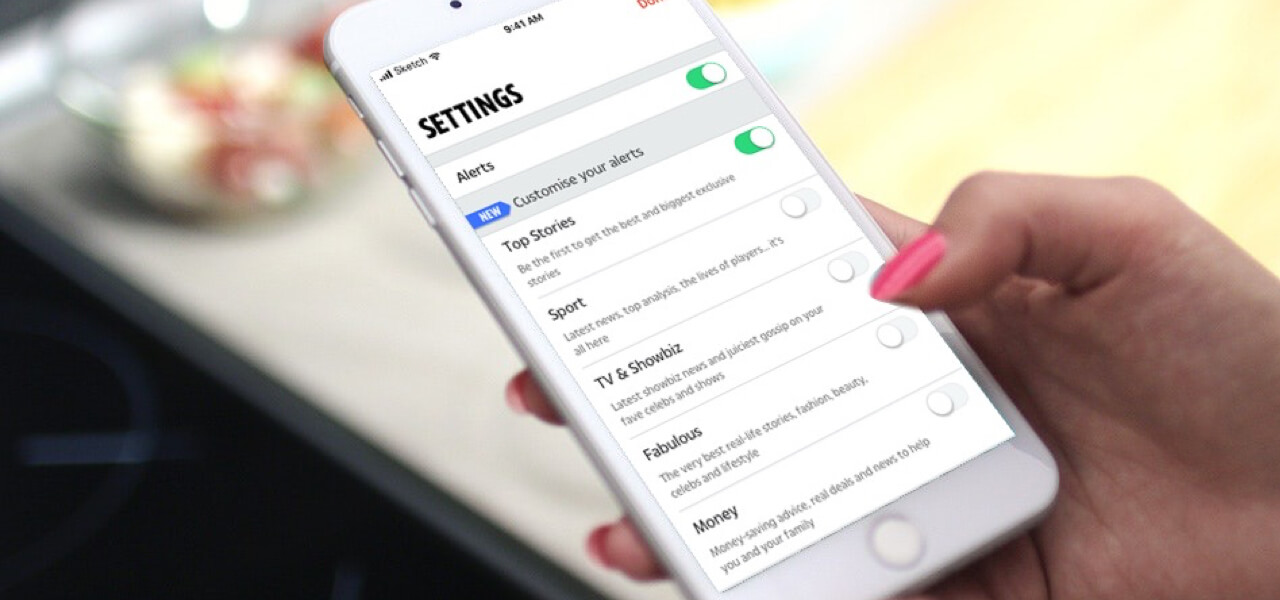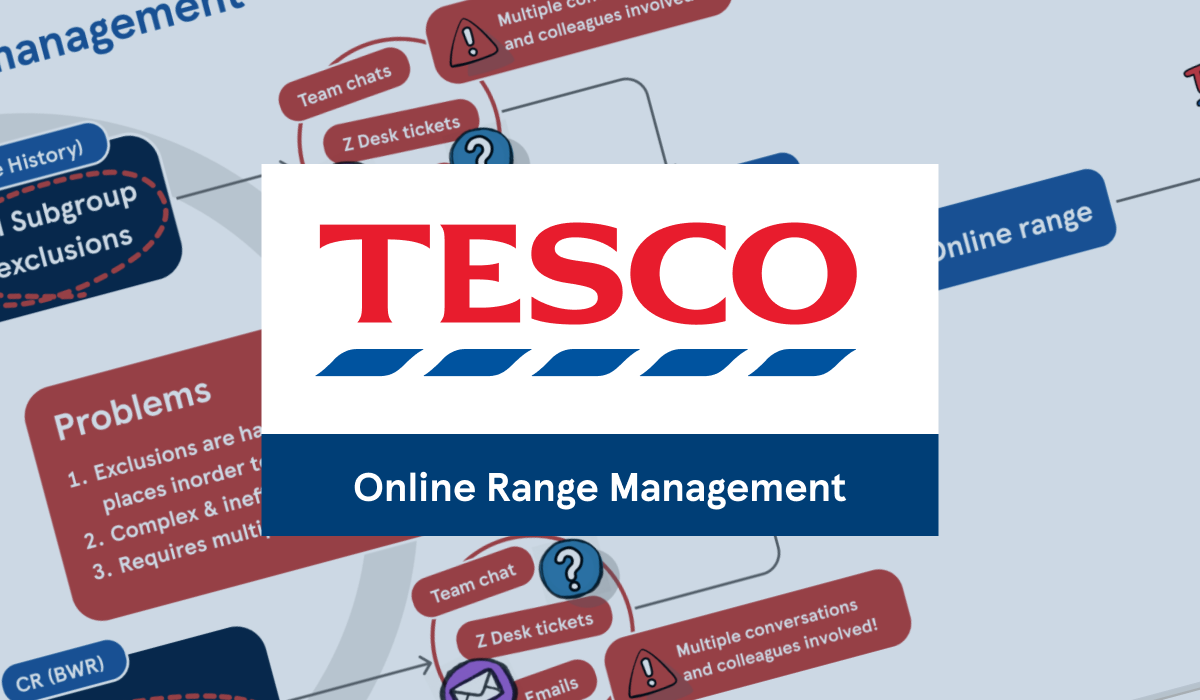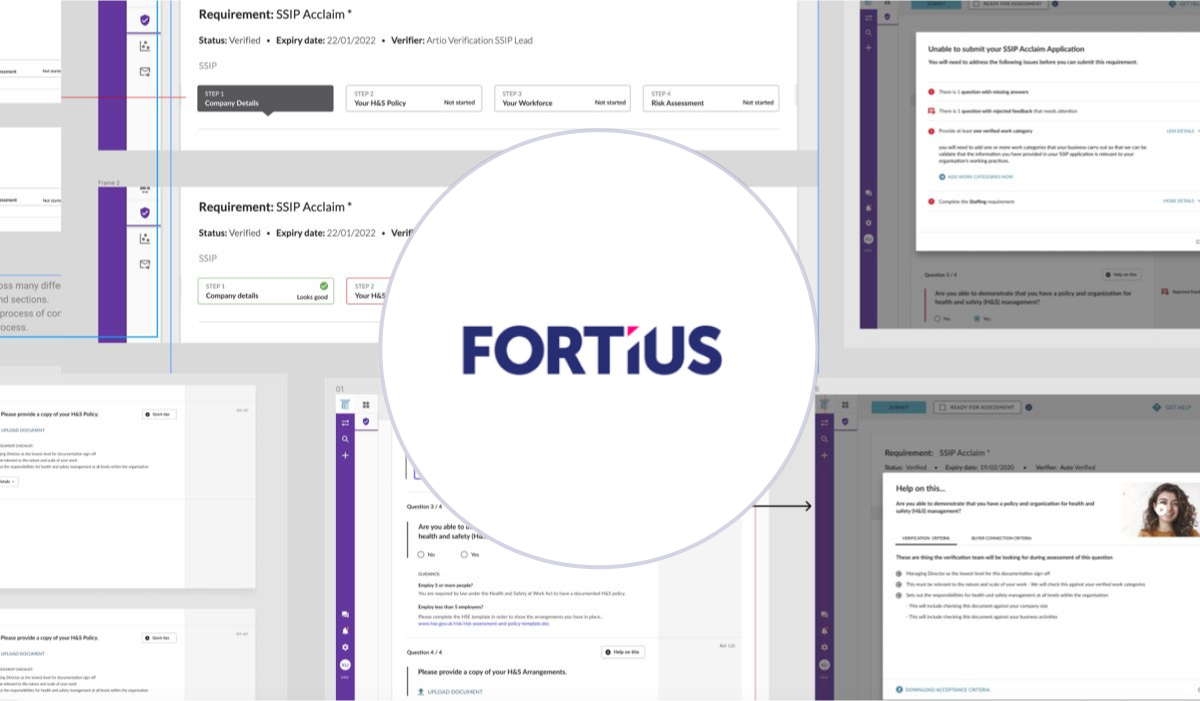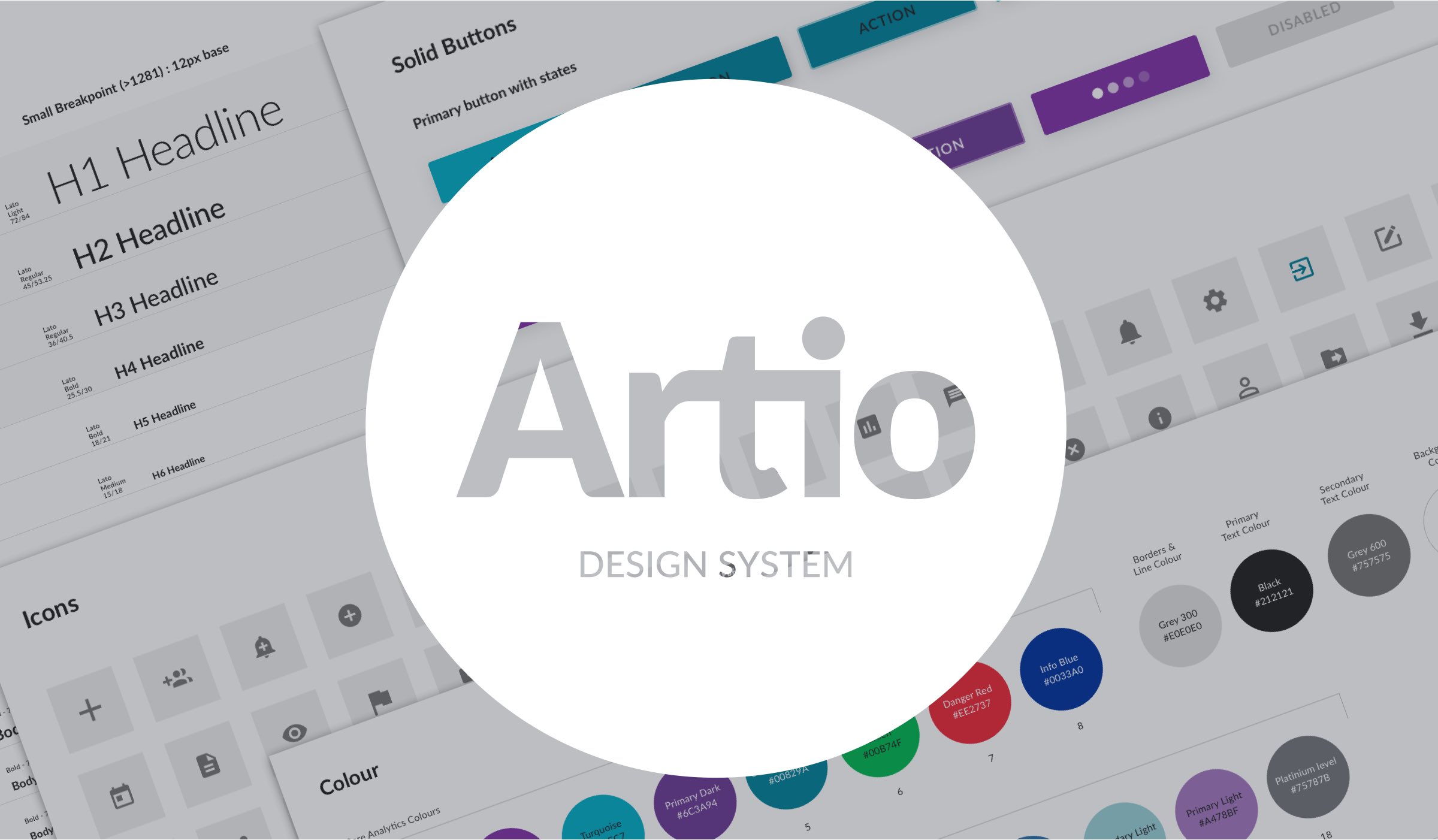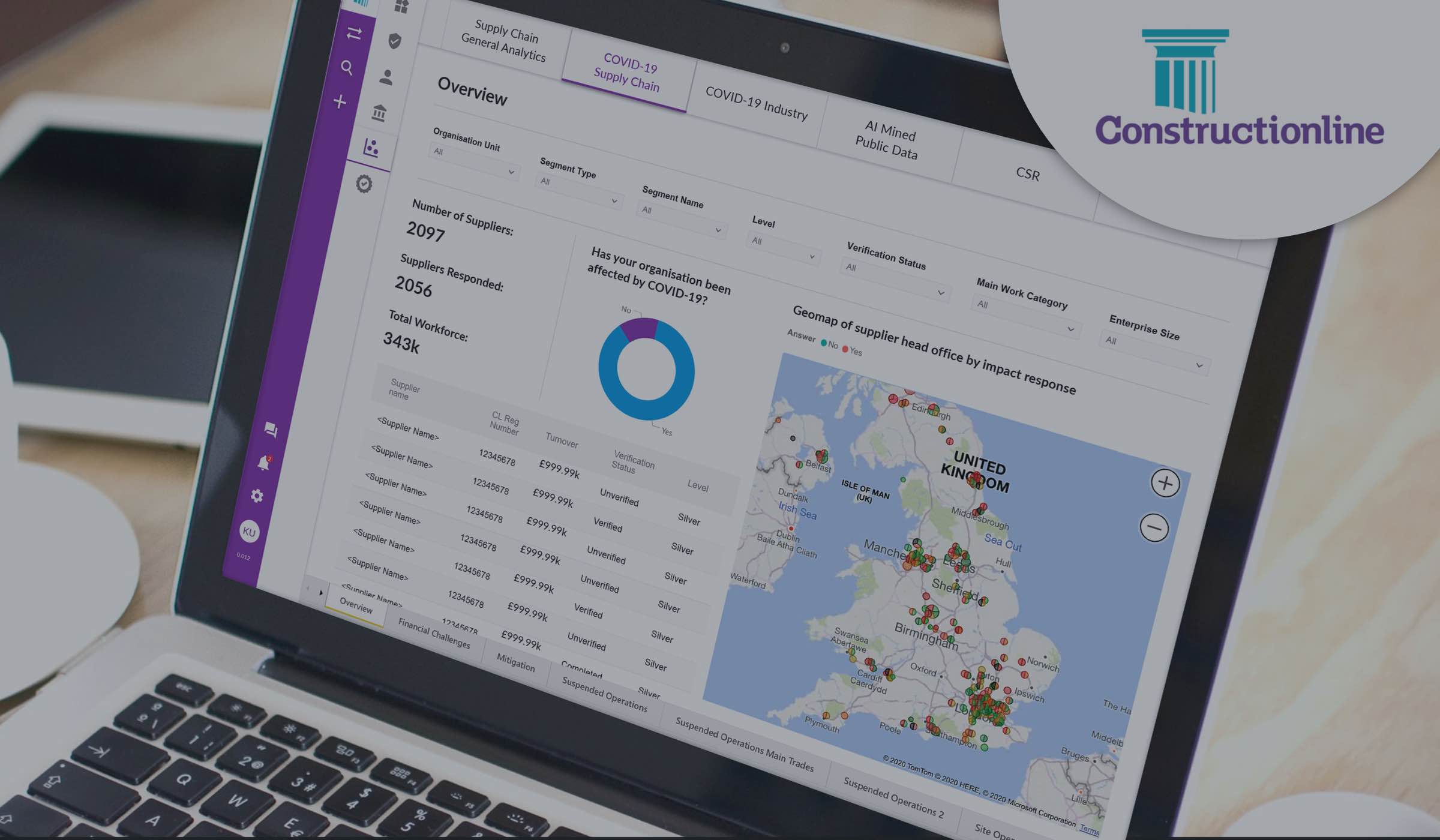Project Description
Case Study: Overview
The Sun editorial team had noticed, a significant amount of Android and iOS users opting out of push notifications and news alerts within The Sun native apps. Working in collaboration with the editorial team, the UXD team were given the brief of how to improve push notifications strategy to help increase user opt in and overall engagement.
Findings from previous user research:
The Sun digital platform produces a broad range of content catering to a wide audience and demographic. The native products have to play to the needs of different interest groups within the confines of an ‘all-in-one” app. Previous user research had highlighted user’s appetite for better content personalisation options and to tailor communications by channel and audience, while also having the ability to access content offline.
A polarised audience
We ran some extra user research which backed up the finding of previous research which showed there was a big polarisation between users. Within The Sun user base there were 2 groups that made up a majority of the traffic. Users interested in consuming “Sport/Football” content and users interested in “Showbiz/Gossip/Celebrity” content, while “Breaking News” and front page news scored high with all users groups.
We wanted to learn from our users and leverage knowledge, opinions and expectations for the use of push notification, specifically regarding engagement times during the day as well as message relevance and tone. We also wanted to understand user’s wants and needs regarding potential personalisation options. Our intention was to deliver notifications that are relevant, timely and contextual to the users needs while respecting their time, attention and expectations.
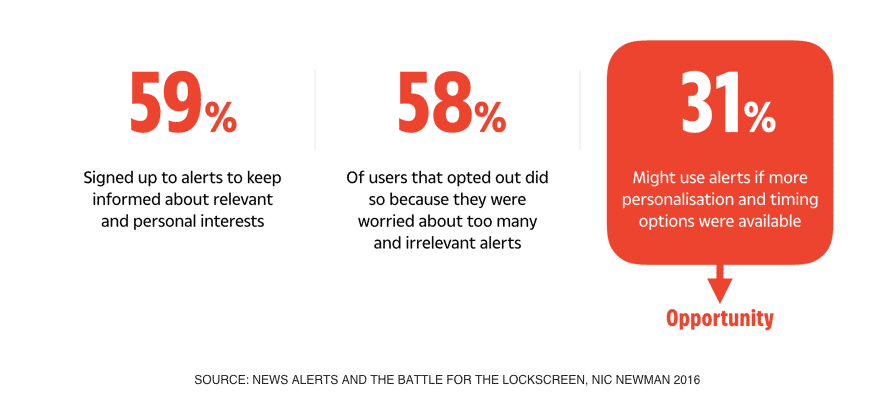
Opportunities
Active personalisation
Include a level of active personalisation via a notifications centre – Potentially allowing users to choose notification topics, amount of alerts and see whether this could also work along side existing personalisation features already in the app.
Passive personalisation
Include a level of passive personalisation. i.e. learn from user behaviour, leverage things like NS Activity and analytics to determine what pushes worked when and for whom, to better tailor and target notifications.
Tone, timing & frequency
We ran a research study in collaboration with the editorial team to test the engagement levels of different notification outputs sent at different times of the day in order to measure what type of messages and different broadcast times drove the most engagement.
Competitive Analysis – Key Learnings:
Direct competitors offer a poor user experience for push notifications.
Low functionality and personalisation for push notifications give us an opportunity to leap competition.
‘Breaking News’ push notifications.
Most competitors have a toggle for ‘Breaking News’ push notifications, this enables users to select less volume but higher importance.
Audio functionality, useful or irritating?
Sound is used by most apps to create individual brand identity and tone of voice, however they all have a toggle off button, as this can annoy users
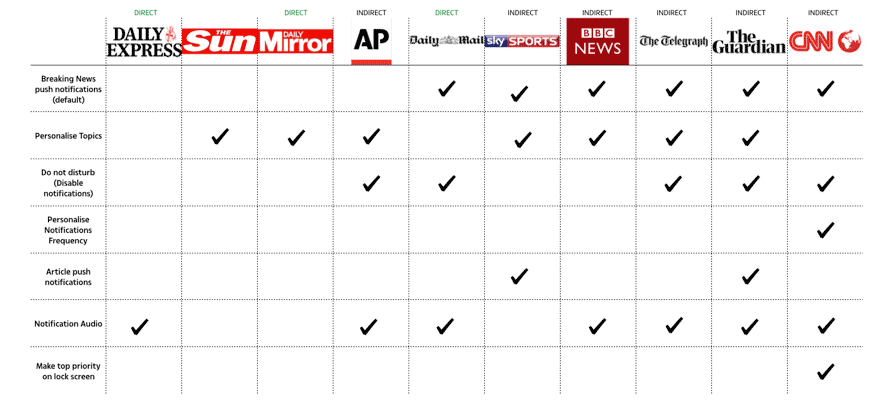
Recommended approach:
As a team we recommended that a more strategic approach to app notifications should help drive traffic, increase engagement and aid user discovery. During user interviews, many users responded well to the idea of having personalisation options in order to opt into notification topics they would be interested in, but more importantly for them to opt out of notification topics they aren’t interested in.
Segmenting alerts: based on 2-5 buckets (Maximum 5)
Although users had shown a positive response to personalisation features, research also showed that users didn’t want to be overwhelmed with too many personalisation options. So we needed to find the “sweet spot” between a single alerts “OFF” switch and an excess of granular controls. Our suggestion for the business was to aim to have between 2 and 5 notification topics for users to opt in to and base these topics on the most popular and most read content topics in The Sun platform. e.g. Sport, Football, TV & Showbiz, Money and Lifestyle.
Temporary buckets for alerts for major events
Potentially introducing temporary notification topics for users to opt in to receive alerts for major timely events for a specific time period. (e.g. World Cup, Elections, Love Island)
Alert quiet times
The ability to enable Alerts Quiet Hours to allow users to actively set times where alerts are not received.
Active Personalisation:
Giving users the ability to opt in and out of different alert topics. Mapping user journeys:
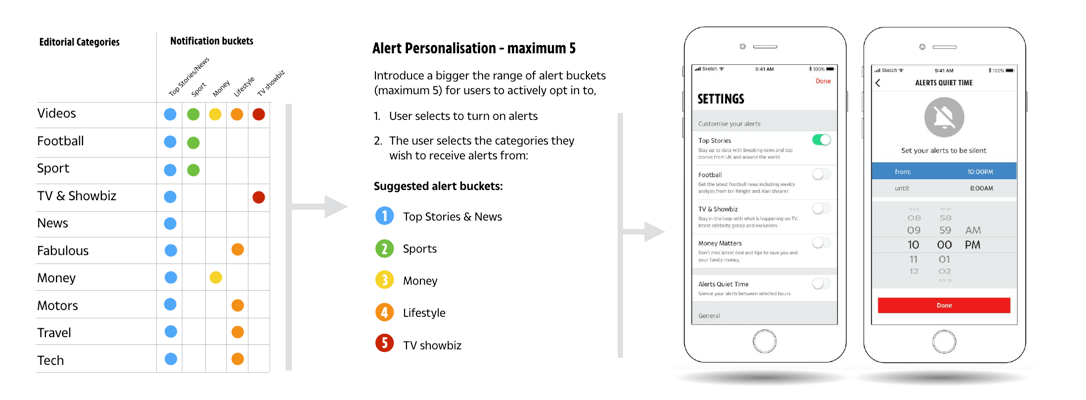
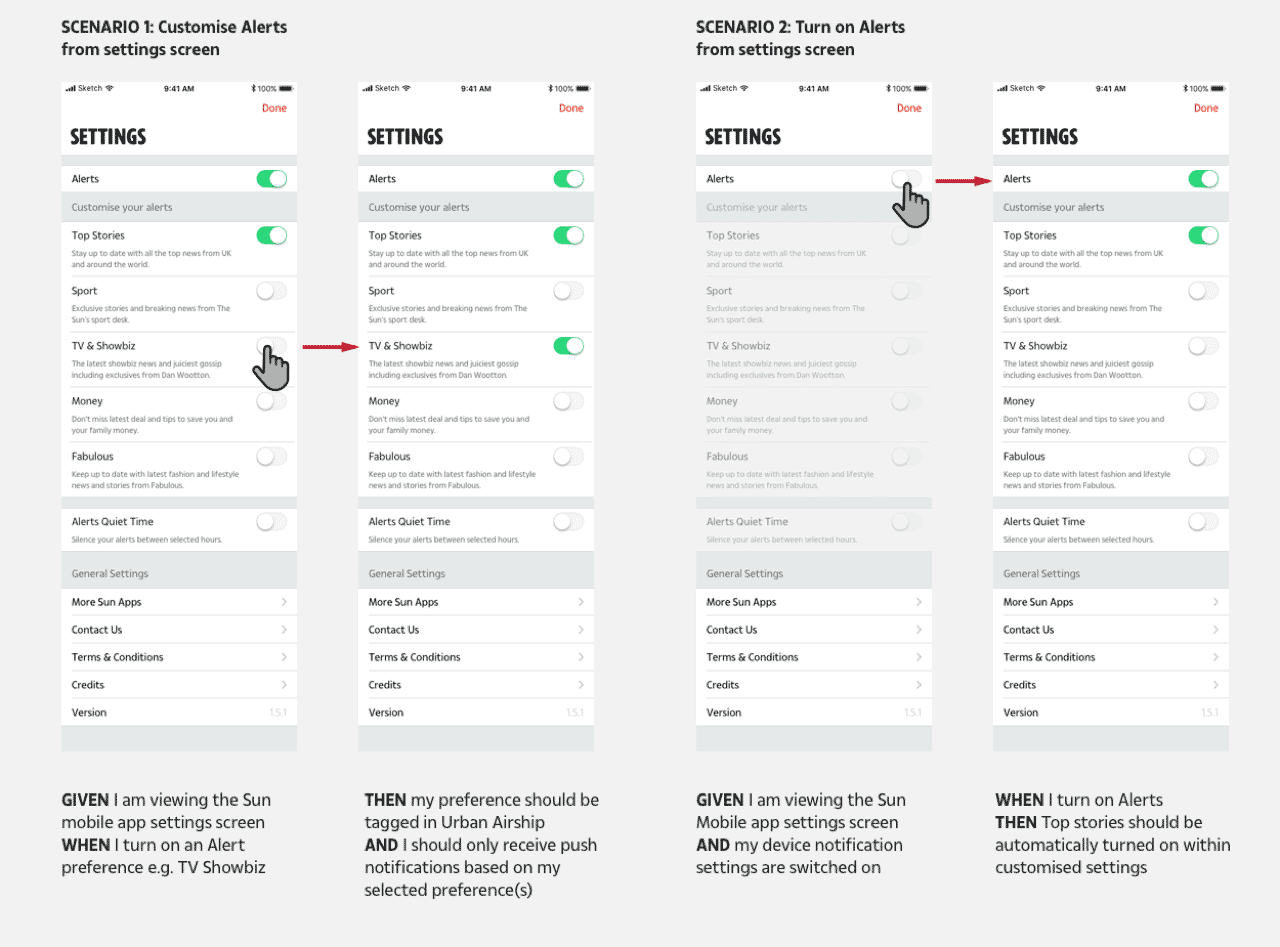
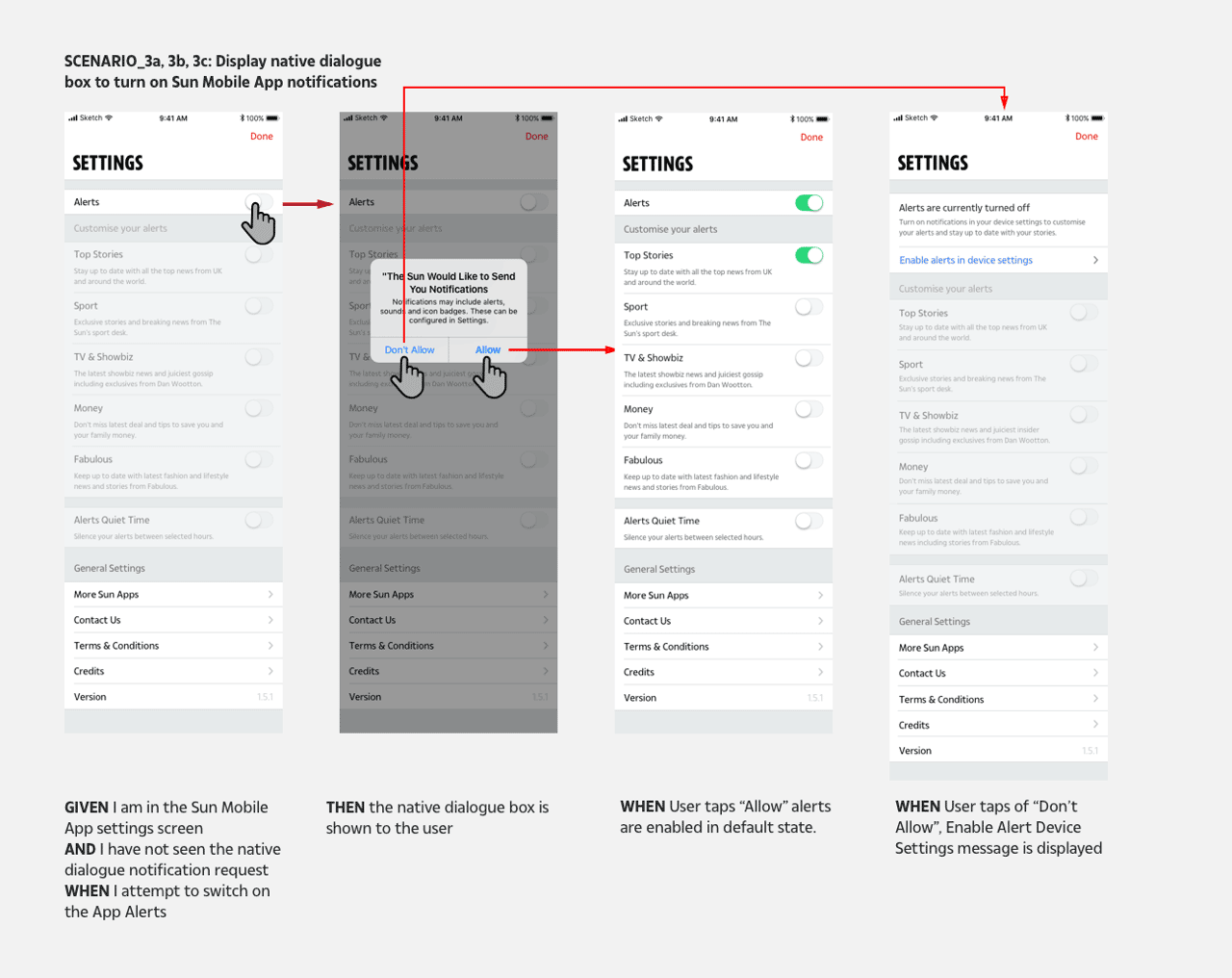
User Onboarding
For first time users we introduced a new onboarding screen which introduced them to the personalised alerts feature. For iOS users this prompted users to opt in to app notifications. In addition we decided to introduce a new inline promotional widget that would sit between content blocks with in topic index pages. This was intended to engage existing users who had previously opted out, giving visibility to the new features as well as navigating them to the alerts setting screen and notification options.
Display logic:

